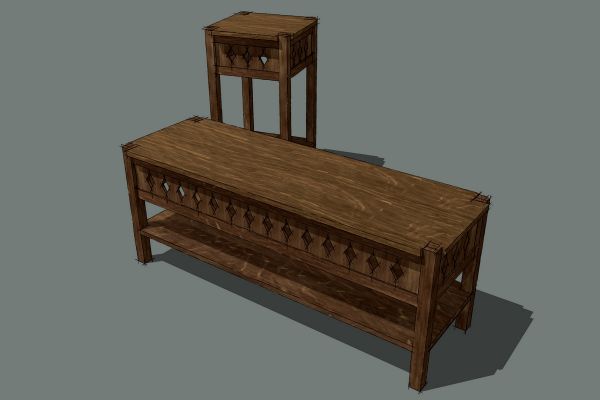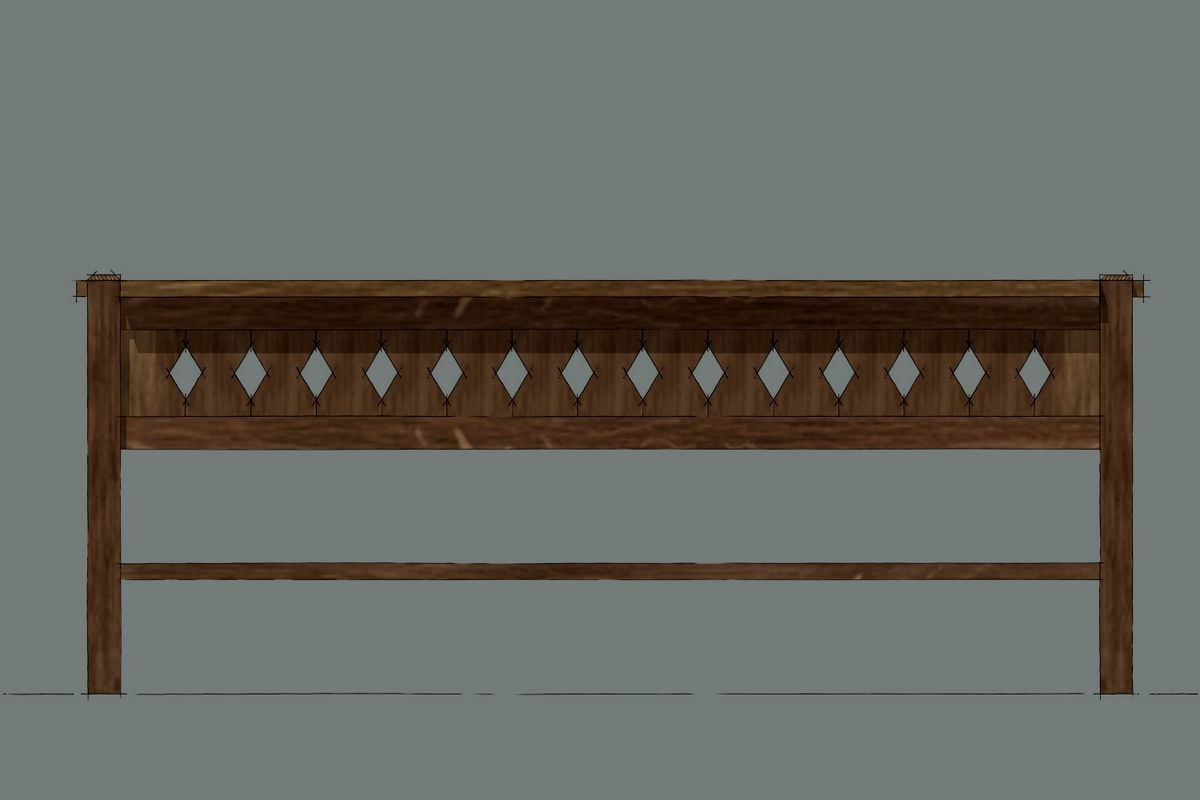

So after you’ve drawn up your model and shown it to your client, they come back and ask if you could change the dimensions. “Sure,” you say, “I’ll just start from scratch and make a new version of it.” Well, it really isn’t all that bad if you’ve drawn up the model properly in SketchUp to begin with.
In a recent blog post I demonstrated how I went about drawing up a little fern stand based on a couple of drawings in an old book. We don’t really need a fern stand in the house since my wife and I have black thumbs but we could use a bench to sit on near the front door. I wondered what the fern stand would look like as a bench. In less than three minutes I found out. The following video shows the process I used to make the evolution.
In the video I copied the original fern stand so both pieces would be in the same file. I could have modified the original and used Save as… to give it a new file name. The simplified version of the modification is this: I made the component instances in the copy of the fern stand unique, some of the components get moved and for those that need to be made longer, only part of the geometry gets moved.
The little diamond slats on the apron get copied using the linear array function of the Move tool. After moving a copy of the slat over by the slat width, I hit Enter followed by *11, Enter. This made eleven copies of the component which fit perfectly.
The previous video showed components getting flipped which effectively mirrors them. Although the components in this model would have fit if they’d been rotated end for end, flipping is quick and accurate. the big payoff thought comes when the model gets modified. If I’d rotated the rails and slat components for the back apron instead of flipping them, I would have had more work to do when modifying the model. Since I make it a habit to always flip symmetrical components when I make them, I don’t even have to think about that extra work.
The following video was done in real time. There’s no editing to shorten up the process.

























Comments
Dave
The method demonstrated in the video was obviously affected by the fact that you had an existing model of your Fern Stool which you adapted to create an elongated bench.
In Sketchup tutorials/books we are often advised to only model half an object and then flip-along /mirror the other half . If you wanted to model an elongated bench from plans /dimensions such as were illustrated in the Mission furniture catalogue where you found the fern table , would you model half and flip/mirror the other ?
Thanks
Jonas Mac
Jonas, modifying an existing model was kind of the point of this video. If I was drawing the bench from scratch, I would use exactly the same method I used in the video showing the drawing of the fern stand. I would only draw side or front components and flip the copies for the front/back as needed.
Dave
Thanks for the reply, and for clearing up my issues I with the fern stool.
The emphasis on your strategy for drawing objects in Sketchup in both videos I found personally very useful . I have no doubt it will help me save time in my own work.
Jonas Mac
Log in or create an account to post a comment.
Sign up Log in